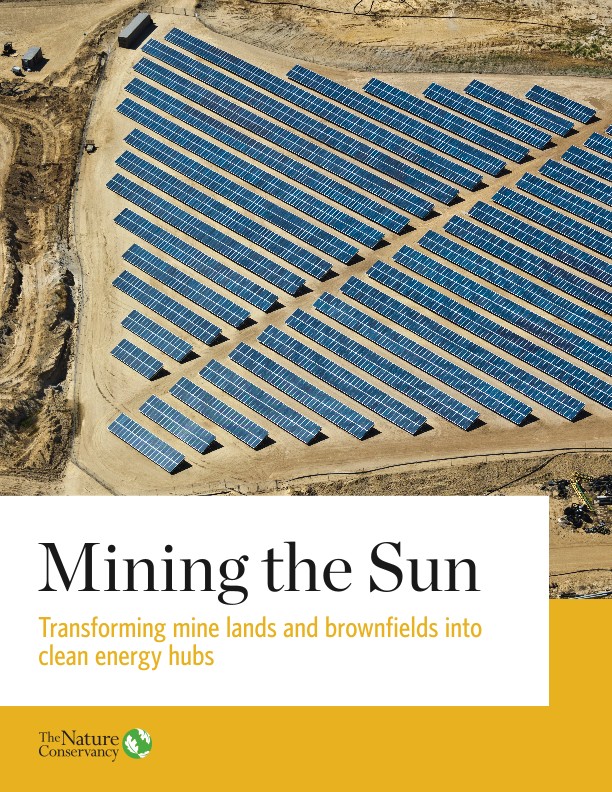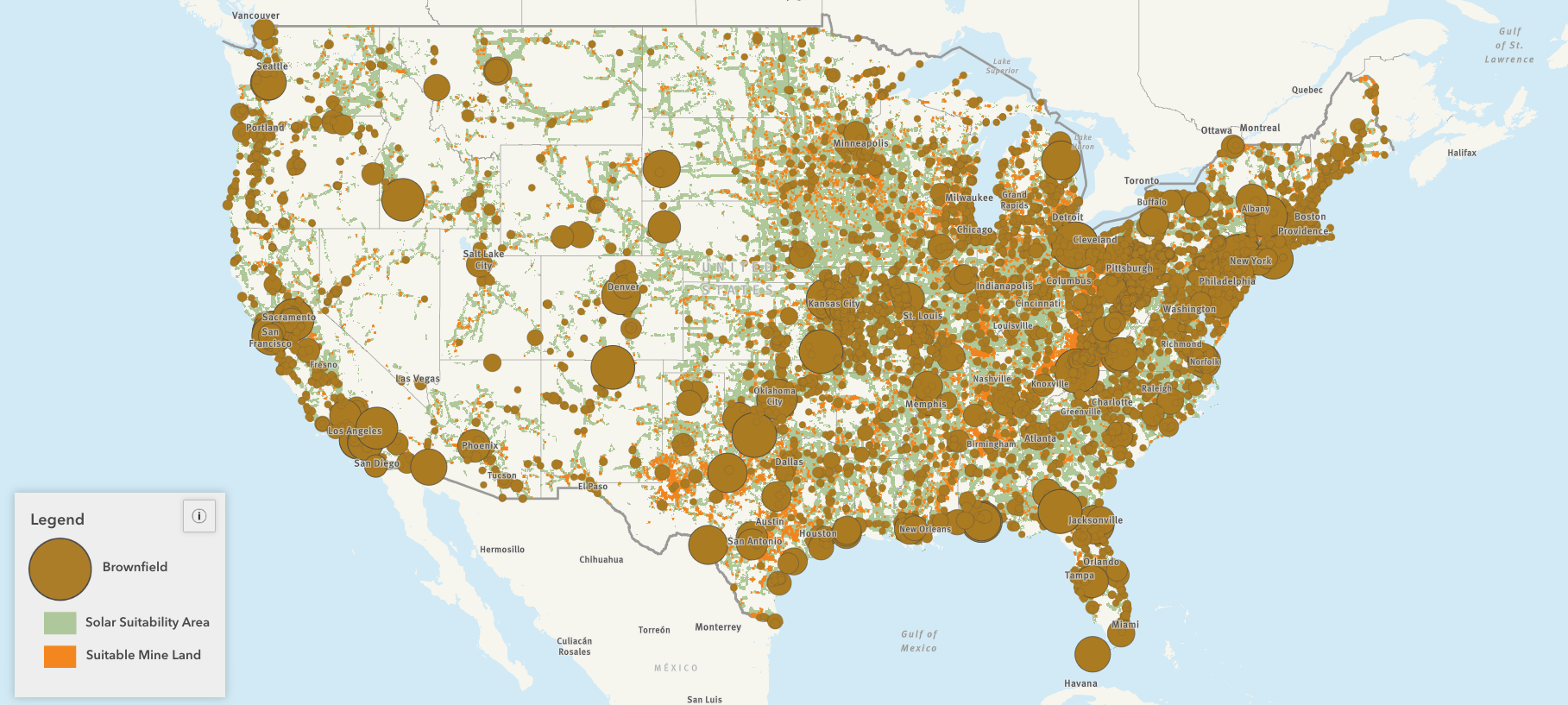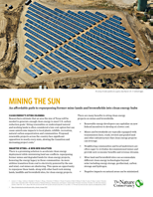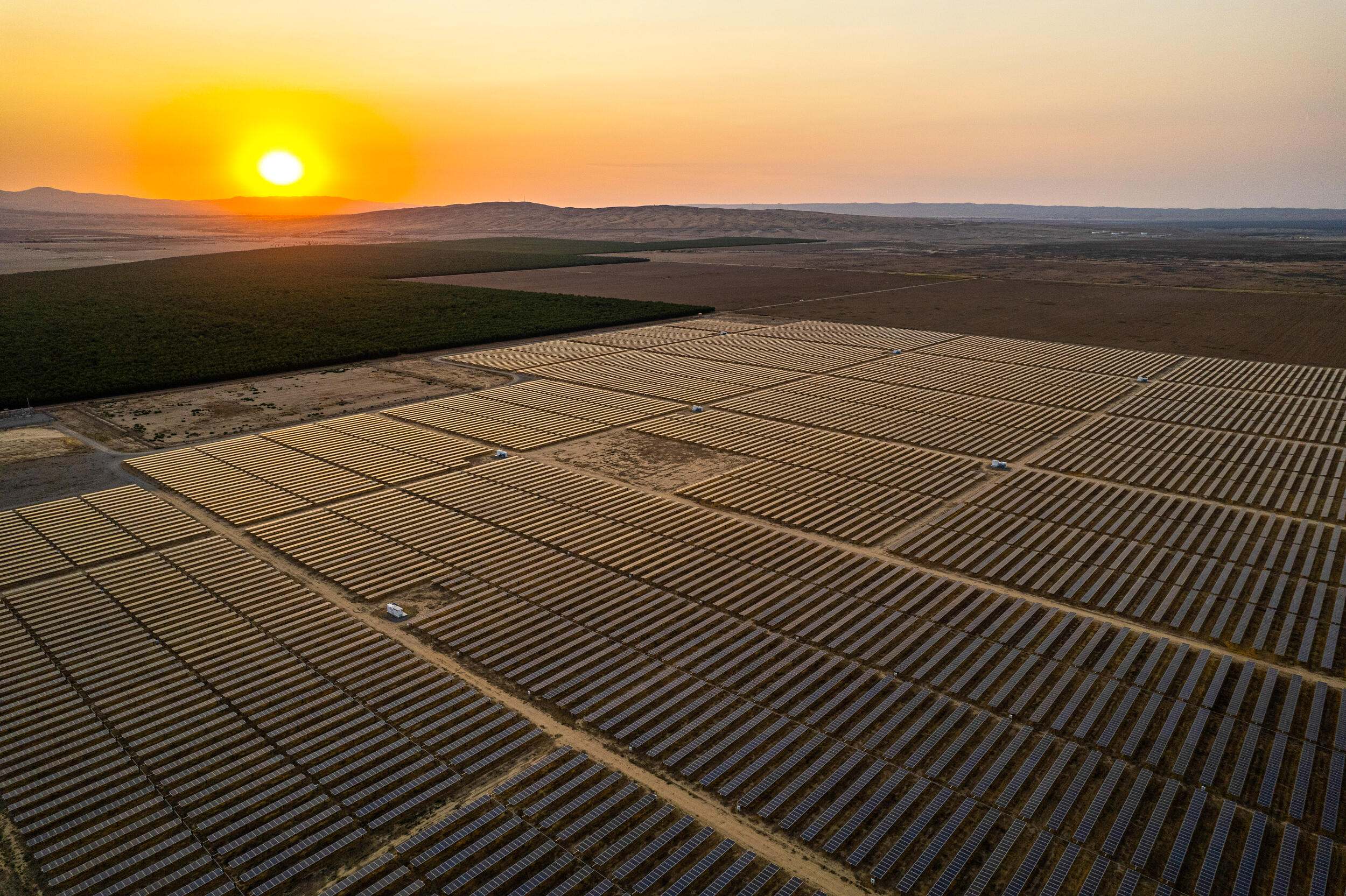
If clean energy continues to be sited the way it always has been, the U.S. will need an area the size of Colorado and Wyoming combined to meet our climate targets. Developing new large-scale energy projects on natural lands has long been thought to be the most affordable option, but it also can create local conflict and negatively impact nature, slowing down the clean energy transition.
Fortunately, there’s a promising solution. Mining the Sun, a report by The Nature Conservancy, suggests that siting clean energy infrastructure on degraded lands like mining sites, landfills and brownfields can be a win-win solution for climate, conservation and communities.
The Mining the Sun report tells us the benefits of building clean energy projects on mine lands, brownfields and landfills. It offers two case studies of solar projects being built on mine lands that TNC has helped catalyze and includes overviews of relevant state and federal policies, economic analyses, community engagement best practices and maps showing brownfield and mine sites viable for energy development.
Download
Repurposing mines and brownfields for clean energy can reduce costs, accelerate the clean energy transition and protect wildlife.
DOWNLOADQuote: Nels Johnson
Renewable energy development on mine lands is an exceptionally promising avenue to produce clean energy in a way that respects communities and local landscapes.
Nationwide, there are about 500 renewable energy projects sited on brownfields and mine lands—a fraction of what’s possible.
Mining the Sun: The Benefits
5 Benefits of Solar Energy on Former Mines and Brownfields:
-
Financial Incentives
The 2022 Inflation Reduction Act has a tax credit up to 10% for projects built in energy communities, which includes communities with former coal mines and brownfields. Many states have incentives for reuse of brownfields and other contaminated sites in addition to the IRA tax incentives.
-
Economic Revitalization
Mining communities have relied on mines as an economic driver. After mines close, it can be hard to find a productive use for that land. Developing clean energy on mines offers an opportunity to bring economic vitality back to mine sites through tax revenue and short-term jobs.
-
Minimizing Environmental Impact
People value natural areas and local farms. Building on mines and brownfields can reduce how much these lands are developed for renewable energy. It can’t be completely avoided, but prioritizing industrialized areas can ease the pressure of converting natural and agricultural lands.
The U.S. Environmental Protection Agency finds that mine lands and brownfields could supply up to 1.3 million MW of solar energy, enough to power most homes in the U.S. if all available lands are developed.
Explore the Map
TNC has created a navigable map that shows where mines and brownfields exist.
Learn MoreIdentifying Lands for Clean Energy Development
Worldwide there are an estimated 25 million acres of active and inactive mine lands, enough to accommodate a large amount of renewable energy development. The Mining the Sun national webmap shows where lands, including former mines and brownfields, in the U.S. already exist. This navigable map goes one step further outlining lands that are suitable to renewable energy development so energy developers, utilities and state and federal energy offices can easily identify lands that minimize impacts to nature.
TNC has catalyzed several Mining the Sun projects, showing that it’s possible to build financially viable new renewable energy projects on these sites. Click below to explore Mining the Sun projects in action.
Mining the Sun in Action
Explore Mining the Sun resources, projects and opportunities in key states.
Mining the Sun In Action
New England Town Embraces Solar on a Former Copper Mine
Strafford, Vermont looks like the quintessential worry-free New England village. But sitting at Strafford’s center was the Elizabeth Mine, an old copper mine that shuttered in the 1950s. The mine was still leaching acid into the Ompompanoosuc River, a local waterway that feeds the Connecticut River. Eventually, with the mine's dam was on the brink of failure, the Environmental Protection Agency swooped in to clean up the site.
Quote: Scott Alexander
For decades, our miners labored at Starfire to provide the energy that powered this country. To think that the site can be reimagined as a new energy producer, facilitating hundreds of millions in private capital investment, and the creation of a skilled workforce in green energy is truly exciting.
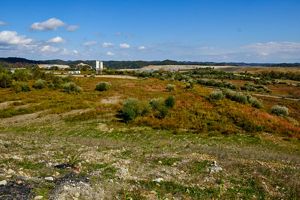
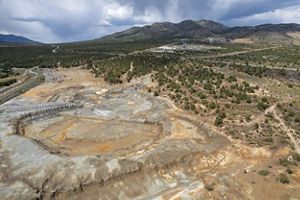
Download
Ready to get started on a Mining the Sun Project? Download the report to learn more.
DOWNLOAD